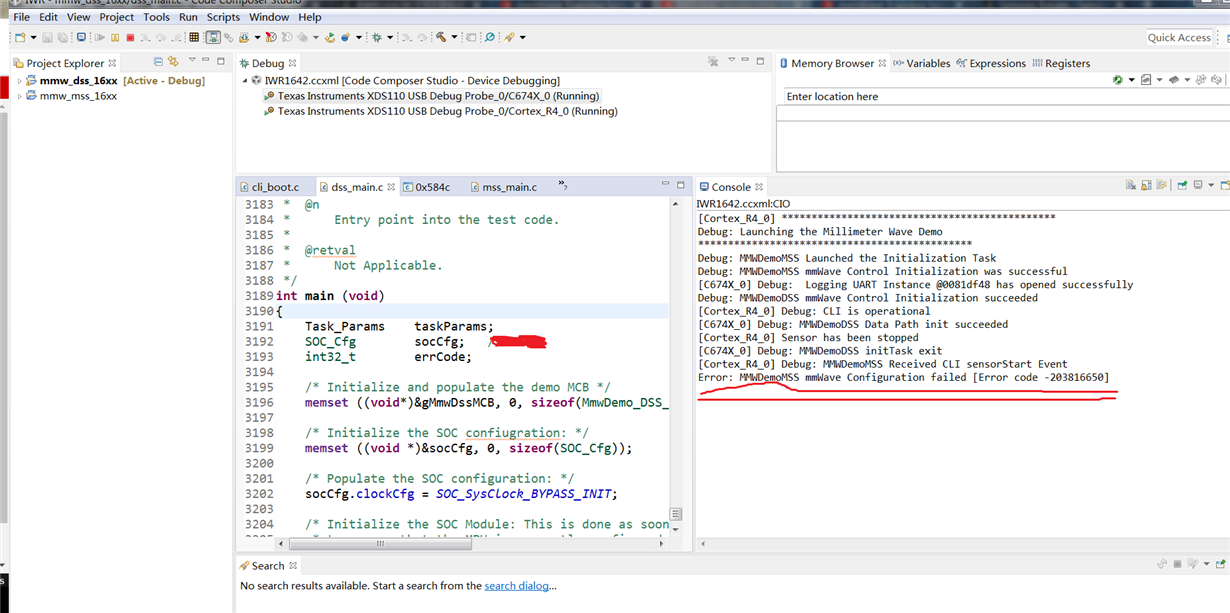Tool/software: Code Composer Studio
I now have an IWR1642BOOST DEMO on hand. I can modify the program to make the board run independently from the host computer. The parameters can be manually configured. Now the program parameters are configured according to my needs. The configuration parameters are incorrect after running, as shown in the figure. Failed, but how can I check which parameter configuration failed? If I don't know which parameter is configured incorrectly, I can't make the corresponding modification, which is very unreasonable. Thank you

